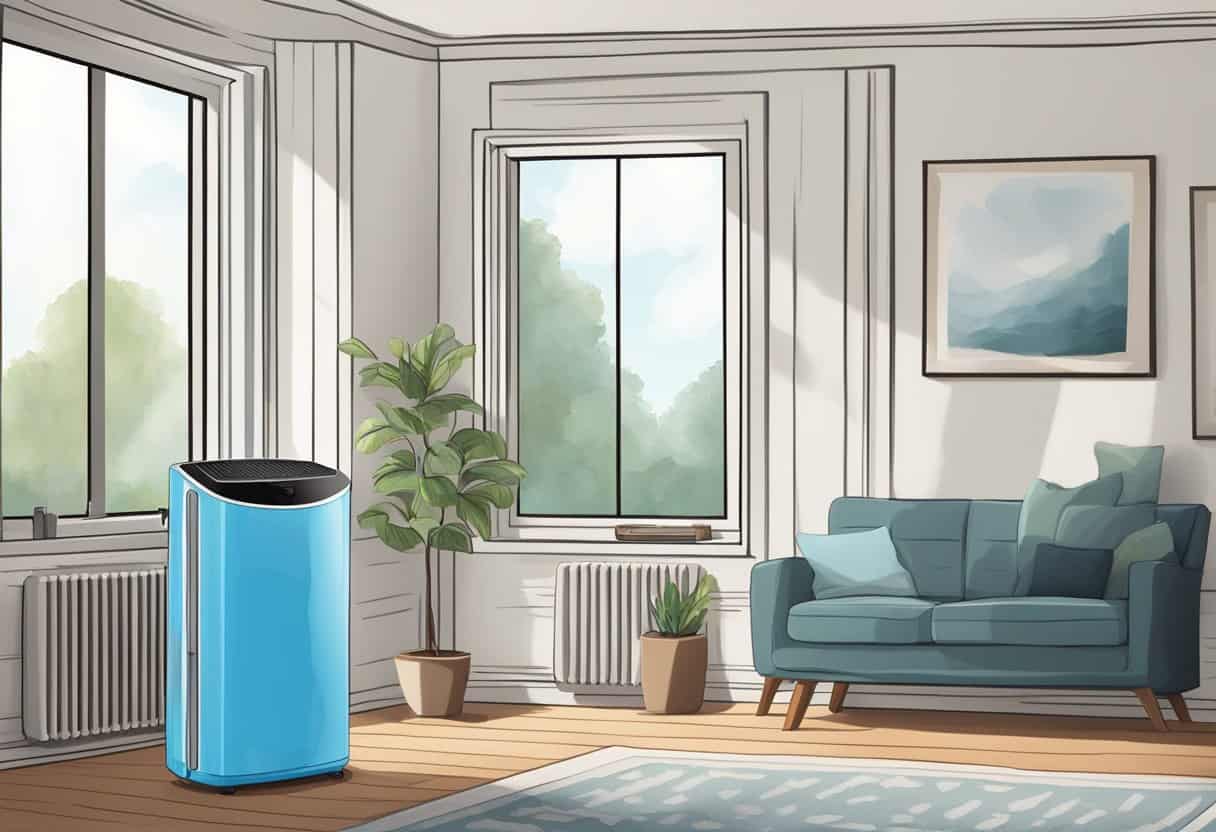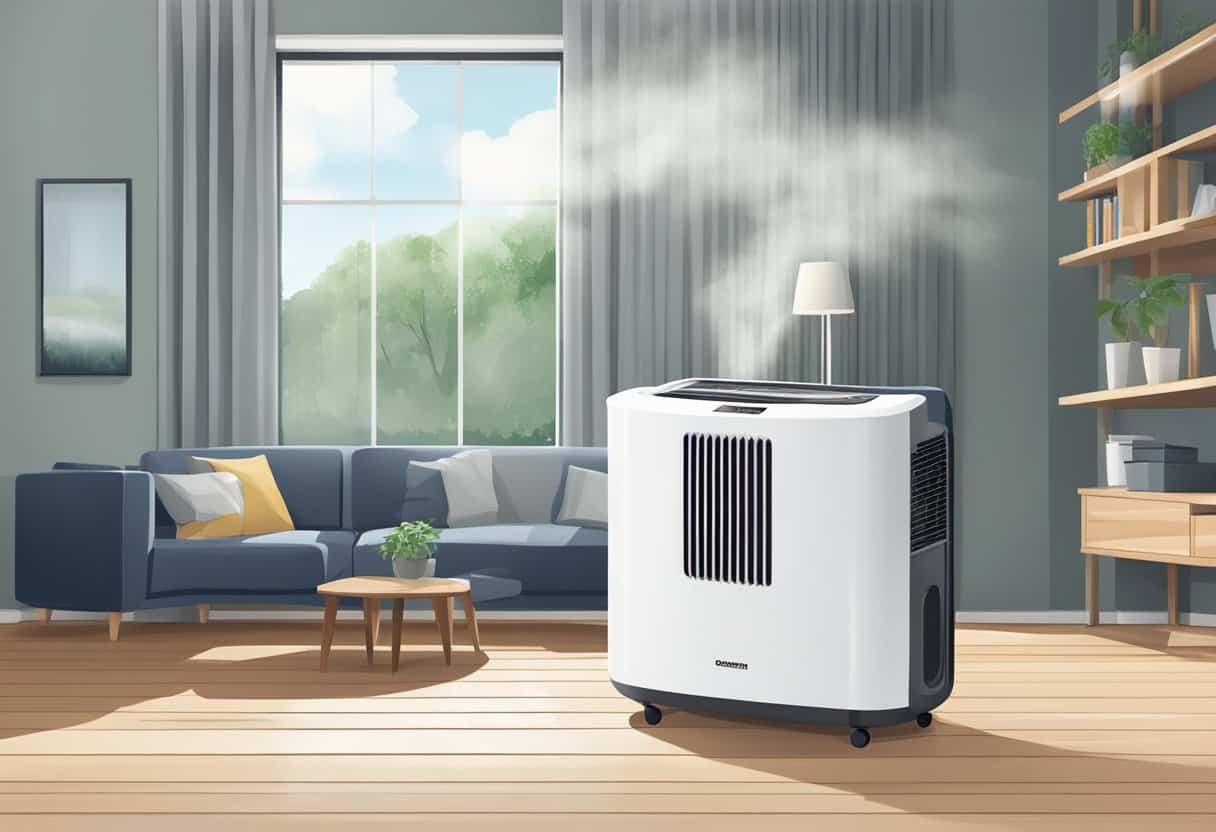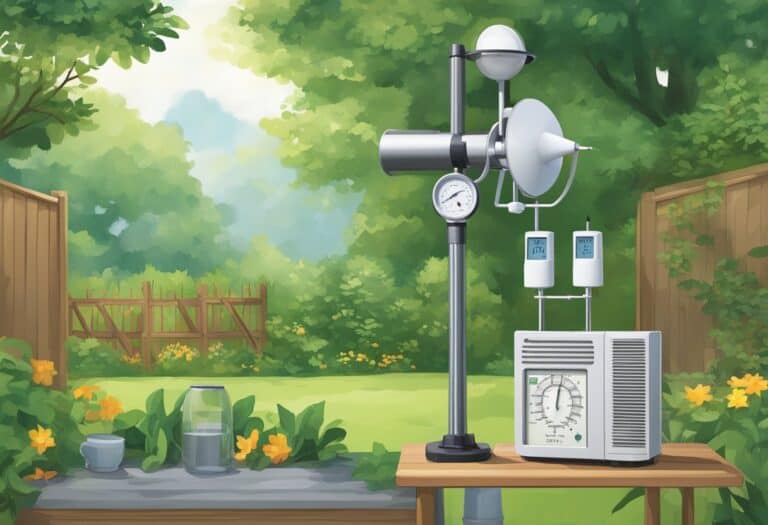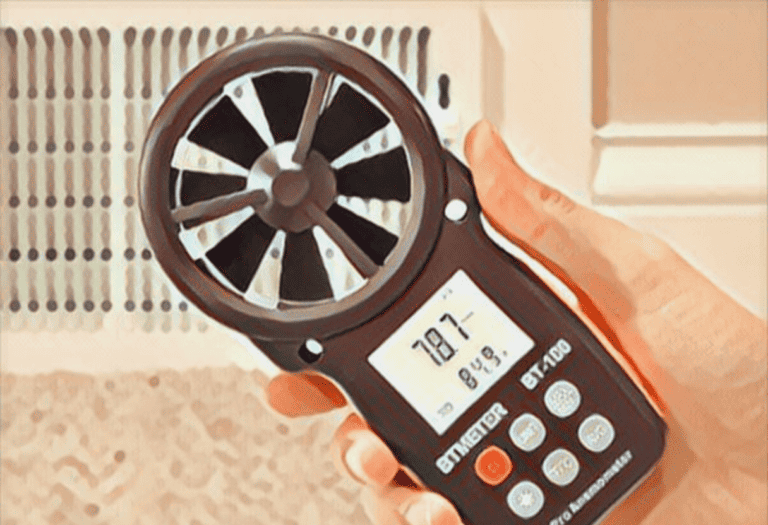Maintaining a comfortable level of humidity in your house is crucial for both your health and the integrity of your home.
High indoor humidity can lead to a multitude of problems, ranging from mold growth to an increase in dust mites and allergens, which can exacerbate respiratory issues. On a purely comfort level, too much moisture in the air can make your home feel stuffy and can also cause damage to your home’s structure and furnishings over time.
Lowering the humidity in your house involves a blend of home maintenance, practical techniques, and lifestyle changes. Ensuring proper ventilation, using dehumidifiers, and addressing any sources of moisture can significantly impact the indoor climate.
Regularly servicing your HVAC system, utilizing exhaust fans, and adjusting your daily habits, such as air-drying clothes outside instead of inside, can also contribute to maintaining an ideal level of indoor humidity.
To lower humidity in your house, use dehumidifiers, ensure proper ventilation, fix leaks, and use air conditioning. Avoid indoor drying of clothes and take shorter, cooler showers. Reducing indoor plants can also help.
Understanding Humidity in the Home
Understanding the balance of humidity in your home is crucial to maintaining a healthy and comfortable living space. Managing indoor humidity levels can prevent a range of problems from health issues to structural damage.
Causes of High Indoor Humidity
High indoor humidity can arise from various sources within your home. Everyday activities such as cooking, showering, and drying clothes inside significantly contribute to moisture levels. Poor ventilation, especially in areas like the basement or attic, can trap this moisture, leading to elevated humidity levels. Seasonal changes and regional climate can also play a role, as homes in humid climates or during wet seasons often have higher indoor humidity. Air-conditioner controls and occupant behavior are also factors that can affect the humidity in typical and high-efficiency homes.
Health and Structural Impacts
The consequences of excessive indoor humidity can be far-reaching. Health issues such as allergies and respiratory illnesses often worsen in damp conditions due to the proliferation of mold, mildew, and dust mites. Mold and mildew growth is not only unsightly but also can cause rot and structural damage over time. Materials like wood can absorb excess moisture, leading to condensation which may result in costly repairs. It’s essential to address these risks to protect your health and the integrity of your house. Understanding the indoor humidity environment in Chinese residential buildings shows the effects and control measures applicable in various environments.
Practical Techniques to Lower Humidity
Managing indoor humidity is essential for comfort and health. Certain strategies involving ventilation and specific appliances can effectively reduce excess moisture in your home.
Ventilation Strategies
Optimal ventilation is key to controlling humidity. Regularly open windows to allow for cross-ventilation and air exchange. This is particularly effective in areas like the kitchen and bathroom where moisture levels tend to spike due to cooking and showers. Consider installing exhaust fans in these high-moisture areas to expel humid air directly outside, aiding in air circulation and preventing condensation.
- Use Fans: Strategically place fans throughout your home to enhance airflow. Ensure they are directing moist air towards open windows or exhaust fans.
- Laundry Tips: Avoid hanging wet laundry inside. If you must, use a fan to circulate air and open a window to vent the moisture.
Humidity Control Appliances
Sometimes natural ventilation isn’t enough. That’s when humidity control appliances come into play.
- Dehumidifiers: A dehumidifier can be a powerful ally in areas with persistent dampness. They extract moisture from the air, collecting it as water that can be later removed.
- Place a dehumidifier in areas like basements or anywhere you notice moisture buildup.
- Air Conditioning: Your AC system not only cools but also removes humidity. Ensure it’s well-maintained for maximum efficiency.
- Running an air conditioner during hot, humid days can significantly reduce indoor moisture levels.
- Portable AC Units: For smaller areas or spot cooling, a portable air conditioner can reduce both temperature and humidity.
Ensure your home’s air circulation system is clean and working efficiently to prevent moisture accumulation. Regularly clean or replace filters in both your AC system and dehumidifiers to maintain their effectiveness.
Home Maintenance for Humidity Control
Maintaining optimal humidity levels in your home is crucial for comfort and health. Proper sealing, insulation, and moisture control can prevent common issues such as mold and mildew.

Sealing and Insulation
To combat high humidity, start by checking for leaks in your home’s envelope. Seal gaps around windows and doors with quality weatherstripping to prevent moist air infiltration. Ensure that your home’s insulation is intact, especially in the attic and exterior walls. This acts as a barrier to water vapor, keeping indoor humidity levels low.
- Check List:
- Insulation: Review the state of insulation in key areas.
- Leaks: Regularly inspect for and address any leaks.
- Weatherstripping: Replace worn weatherstripping around openings.
- Sealing: Use caulk or foam sealant for small gaps and holes inside and outside your home to reduce humidity ingress.
Mold and Mildew Prevention
To prevent mold and mildew, keep the air moving and surfaces dry. Utilize exhaust fans in high moisture areas like kitchens and bathrooms. Clean any visible moisture from surfaces promptly to deny mold a breeding ground. For persistent moisture issues, consider a dehumidifier to keep surfaces dry and maintain a healthy indoor environment.
- Action Steps:
- Ventilation: Ensure proper ventilation where water vapor is commonly generated.
- Dry Surfaces: Wipe down any wet surfaces immediately.
- Dehumidifier: Use a dehumidifier in damp areas to control moisture levels.
By adhering to these home maintenance strategies, you can effectively control humidity and safeguard your home against moisture-related problems.
Lifestyle Changes to Reduce Indoor Humidity
Managing indoor humidity is crucial, especially during summer and rainy seasons, when high moisture levels can become a problem in your home. Simple lifestyle adjustments can make a significant difference.
- Ventilate Your Home: Ensure you regularly ventilate your home to allow moisture to escape. Open windows when weather permits, or use exhaust fans in high-humidity areas like bathrooms and kitchens.
Table 1: Ventilation Strategies
| Area | Strategy |
|---|---|
| Bathroom | Use exhaust fan during and after showers. |
| Kitchen | Utilize exhaust fan while cooking and dishwashing. |
| Living Areas | Open windows to create cross-ventilation. |
-
Limit Indoor Plants: While houseplants can improve indoor air quality, they can also contribute to excess moisture. Limit the number of plants in your home, or choose varieties that require less water.
-
Smart Cooking Habits: When cooking, cover pots to reduce humidity release. If you have an exhaust fan, use it to expel the extra moisture cooking generates.
-
Shower Smarter: Take shorter, cooler showers and always use the bathroom fan to help moisture exit your home efficiently. Additionally, wiping down the shower walls can minimize humidity.
-
Moisture Absorbers: Consider using moisture absorbers like silica gel or desiccants in areas prone to dampness.
Remember, even small changes in how you manage everyday activities can significantly influence the humidity levels in your home. Adjusting your habits can lead to a drier and more comfortable living environment.
Frequently Asked Questions
In this section, you’ll find concise, expert advice on managing indoor humidity through various methods, including the use of houseplants, natural techniques, and effective strategies for both winter and nighttime humidity control, as well as recognizing signs of excessive indoor moisture.
What are effective houseplants that help reduce indoor humidity levels?
Certain houseplants, like Boston ferns and peace lilies, are known for their ability to absorb moisture through their leaves, contributing to lower indoor humidity.
What are some natural methods for dehumidifying a home?
Natural methods include increasing ventilation by opening windows, using fans to promote air circulation, and placing desiccant materials like rock salt or silica gel around your home to absorb excess moisture.
What strategies can be used to decrease indoor humidity during the winter months?
During winter, strategies such as insulating windows to reduce condensation, using exhaust fans in kitchens and bathrooms, and maintaining a consistent heating schedule can help decrease indoor humidity.
How can I effectively reduce the humidity in my house during the nighttime?
To effectively reduce humidity at night, consider using a dehumidifier in your bedroom, ensure proper ventilation, and avoid activities that generate moisture like taking hot showers or cooking without lids.
What are the indicators of excessive moisture within a home?
Indicators of excessive moisture include condensation on windows, musty odors, visible mold growth, and peeling paint or wallpaper within your home.
Can using a fan in the house help in reducing the humidity levels?
Yes, using a fan can promote air movement and evaporation, helping to reduce humidity levels, particularly when used in conjunction with other methods like dehumidifiers and proper ventilation.







